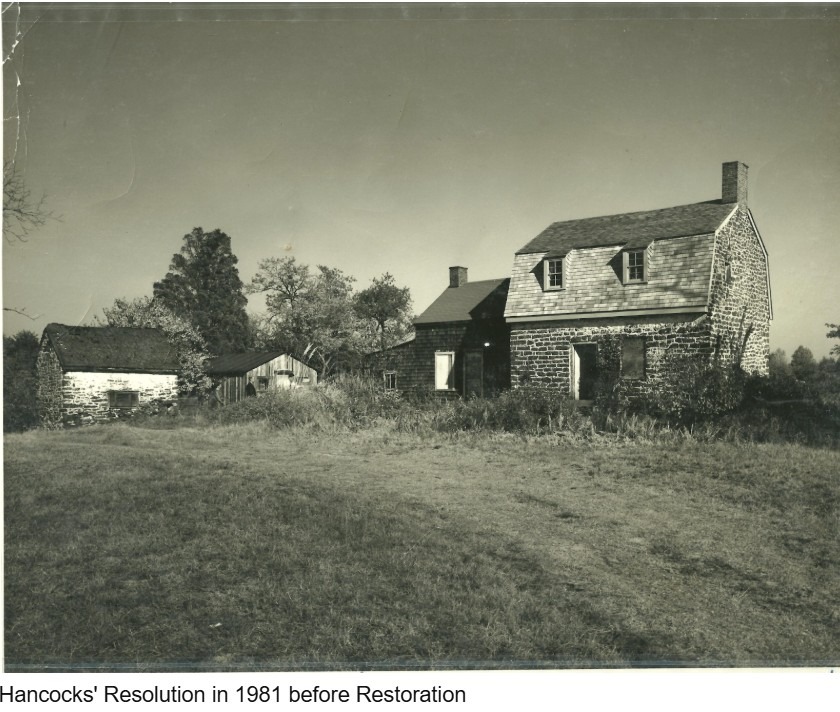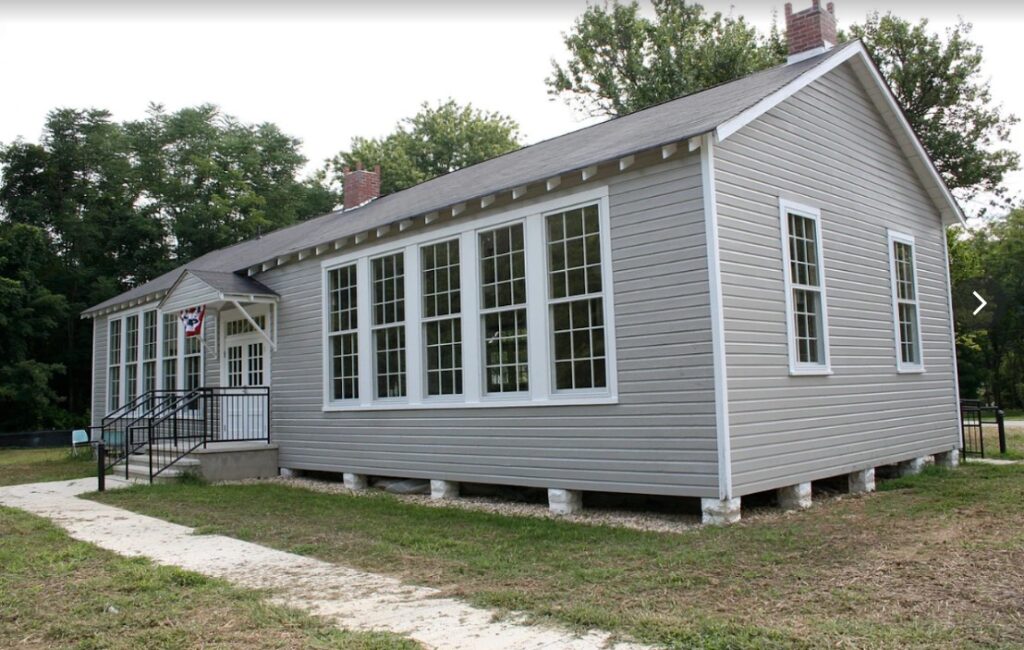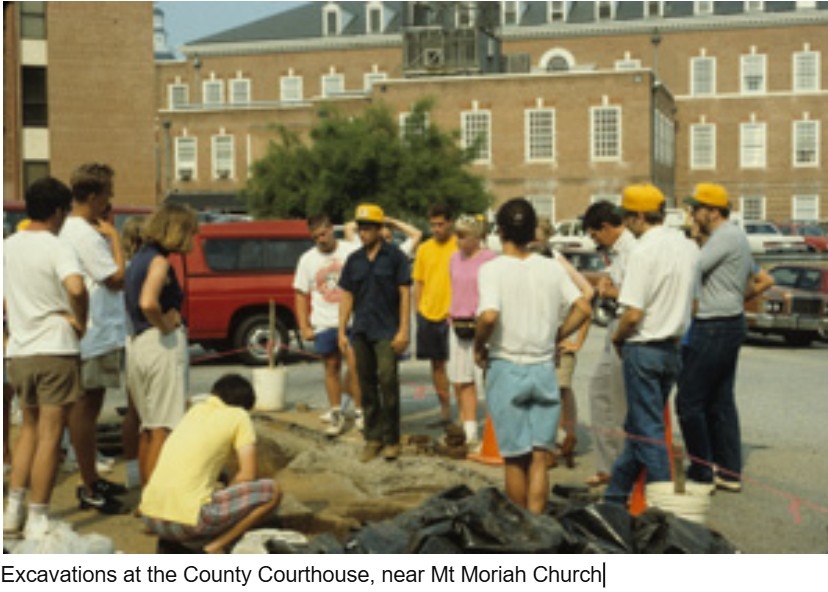On July 7, 1965, Anne St. Claire Wright took then Secretary of the Interior Stewart Udall on a walking tour of the newly designated “Colonial Annapolis Historic District,” one of the first in the United States to receive recognition as a National Historic Landmark. Many credit this designation as a turning point for a City that was threatened by urban renewal, blight, and neglect.
The City government began protecting its historic places, and along with the non-profit Historic Annapolis, the Annapolis community became a leader in preservation, inspiring others nationally– and locally. The Anne Arundel County Trust for Preservation, established in 1974, encouraged preservation across the County, and motivated County leaders to start a County-wide preservation program in the 1980s. Preservation in the early 20th century was largely a privately-funded, philanthropic affair, inspired by Colonial Williamsburg and the Ladies of Mt Vernon. In the face of rapid suburbanization and the loss of countless historic sites nationwide, the protection and appreciation of historic sites for all Americans was codified with the National Historic Preservation Act in 1966.
Preservation has evolved in the past generation, and now more thoughtfully embraces everyday history, not just fancy buildings. Streetscapes, viewshed, and cultural fabric of a community are equally embraced. Someone walking down Pinkney Street today sees the same streetscape as someone walking that route in 1805. Many of the scenic and historic roads across the County remain virtually unchanged since the 1700s. A fresh curiosity about everyday life, and the stories of average people in the past have led preservationists in the City and County to seek out a fuller understanding of history through archaeology- the study of artifacts and forgotten buried places, which are literally stories buried beneath our feet. Oral histories have further enriched our understanding of local history and experiences sometimes not documented in the conventional archival records.
Sixty-five years later, due in part to the famous and sometimes controversial efforts of the strong-willed St. Clair Wright, our local legacy shows that tough decisions and “preservation battles” can bring significant benefits to the community in the long term. This is, in no small part, why Annapolis was recently named one of the top ten places to visit by CNN Travel!
Chesapeake Crossroads Heritage Area embodies that preservation ethos and legacy, and we encourage you to explore the places dedicated to protecting our historic sites and our local heritage. Check out a few of the sites that got their start in the early preservation movement:
- Hancock’s Resolution : In 1969, St. Clair Wright herself successfully lobbied the County to acquire and save Hancock’s Resolution, a rare example of a virtually unchanged 18th century stone building in north county. Still owned by the County today, you can visit to learn about the Hancock Family, early farming, and the transition of the area from farms to suburbia.
- Galesville Community Center, Hot Sox Ballfield & the Henry Wilson House: In 1959, the Galesville Community Center raised money across the Black community to purchase the dilapidated “Rosenwald School.” While it took another four decades to fully restore the black school house built in 1926, it has become a point of civic pride vital to the West Bening Road community. This preservation project launched community efforts to save the Henry Wilson House and the Hot Sox Ballfield right next door.
- The William Brown House at Historic London Town & Gardens: Community leaders, united in the 1970s to save the William Brown House at what is today known as the Historic London Town Town & Gardens Park in Edgewater. In the late 1980s and 90s, this preservation effort set the stage for archaeologists and historians, assisted by school children from across the County to rediscover an entire 17th century seaport through archaeology, creating a major heritage tourism site which you can visit today!
- Mt Moriah Church: Mt. Moriah Church, home to the Banneker-Tubman-Douglass Museum, might not have survived if a court case in 1974 had been lost. Anne Arundel County sought to demolish the historic Black church to expand parking and the Courthouse. Archaeological excavations nearby uncovered the artifacts and stories of a almost forgotten African American neighborhood that thrived during the 19th and 20th centuries, changing the understanding of everyday life for early Americans.
- Annapolis Maritime Museum at McNasbys and the Barge House : If not for the work of the Eastport Historical Committee, founded by Peg Wallace in the 1970s, McNasbys and the Barge House might have been lost after Hurricane Isabel’s destruction in 2003. These buildings now form the core of the Annapolis Maritime Museum and its waterfront campus, a treasured community institution.





——————————————————–
The Chesapeake Crossroads Heritage Area is a Maryland Certified Heritage Area that celebrates the history, culture, and natural beauty of Annapolis and across Anne Arundel County. A 20-plus year collaboration between Anne Arundel County, the City of Annapolis, and the Maryland Heritage Area Authority, we connect visitors and residents to over 60 incredible destinations, from world-class museums and historic homes to scenic parks, trails, nature preserves, and vibrant arts centers.
Looking for a fun way to get the family out and exploring this summer? We invite you to take part in our 2025 Historic Summer Bucket List Challenge, a fresh take on summer fun that combines learning, adventure, and memory-making. Visit our website ChesapeakeCrossroads.org, to explore a full list of attractions. Get started checking items from the Historic Summer Bucket List!
